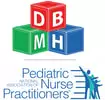Cleft Lip and Cleft Palette
|
Cleft Lip
A cleft lip is considered a congenital deformity of the upper lip and can be unilateral or bilateral. Essentially, the lip, nose, and palate structures do not fuse correctly in utero and that cause the apparent separation of the two sides of the lip.
images from CDC (2014)
|
Cleft Palette:
A cleft palate is an opening in the roof of the mouth in which two sides of the palate did not join together. It can sometimes include the bone of the upper jaw, which can result in problems with development of normal speech as the child develops. |
Assessment & Screening
- Gain a thorough patient history and review medical records
- Check child's hearing. Refer, if necessary.
- Refer to specialist/RN for swallowing/feeding evaluation (clinical feeding evaluation)
- Anticipate Instrumental diagnostic procedures, such as modified barium swallowing study, video fluoroscopy of palatal motion and nasoendoscopy.
- Oral motor evaluation, including: symmetry, oral sensation, strength, and range of motion and oral mobility.
- Refer to speech-language pathologist for Perceptual Speech Evaluation to evaluate voice quality, speech intelligibility, articulation, and resonance.
- For toddlers and school-age, request a communication assessment that includes receptive and expressive language, voice, and resonance.
- If it is determined that the child has velopharyngeal dysfunction, he/she might be sent to a specialist for more testing like nasometry, pressure-flow analysis, tympanometry/audiometry, and/or nasopharyngoscopy may be performed to better understand how the structures of the nose and mouth might be causing issues.
- Refer for genetic evaluation, if suspected.
- Refer family for pediatric dental and orthodontic evaluation as teeth come in.
Position Papers
-
Parameters for evaluation and treatment of patients with cleft lip/palate or other craniofacial anomalies (American Cleft Palate-Craniofacial Association, 2009)
Articles
- Cleft Lip and Palette: Critical Elements of Care (Seattle Children's Hospital, 2010)
- Coding for Cleft Lip and Palate Surgery (American Association of Oral and Maxillofacial Surgeons, 2013)
- Yazdy MM, Autry AR, Honein MA, Frias JL. Use of special education services by children with orofacial clefts. Birth Defects Research (Part A): Clinical and Molecular Teratology 2008;82:147-54.
Resources
For parents:
|
Organizations:
|
Insurance Concerns:
Most health plans will cover the cost of treating cleft lip and cleft palate until the child reaches adulthood. This includes medical, dental, oral and facial surgery, surgical management and follow-up care by oral and plastic surgeons, orthodontic treatment and management, preventive and restorative dentistry, dental structures for orthodontic treatment or prosthetic management therapy, speech therapy, audiology and nutrition services when services are certified as medically necessary and/or consequent to the treatment of the cleft lip, cleft palate or both. For more insurance help, check out Cleft Palette Foundation's insurance tip sheet and their financial assistance handout.
Most health plans will cover the cost of treating cleft lip and cleft palate until the child reaches adulthood. This includes medical, dental, oral and facial surgery, surgical management and follow-up care by oral and plastic surgeons, orthodontic treatment and management, preventive and restorative dentistry, dental structures for orthodontic treatment or prosthetic management therapy, speech therapy, audiology and nutrition services when services are certified as medically necessary and/or consequent to the treatment of the cleft lip, cleft palate or both. For more insurance help, check out Cleft Palette Foundation's insurance tip sheet and their financial assistance handout.
